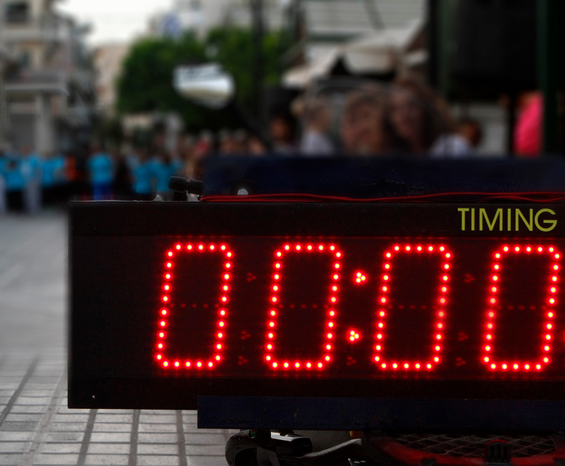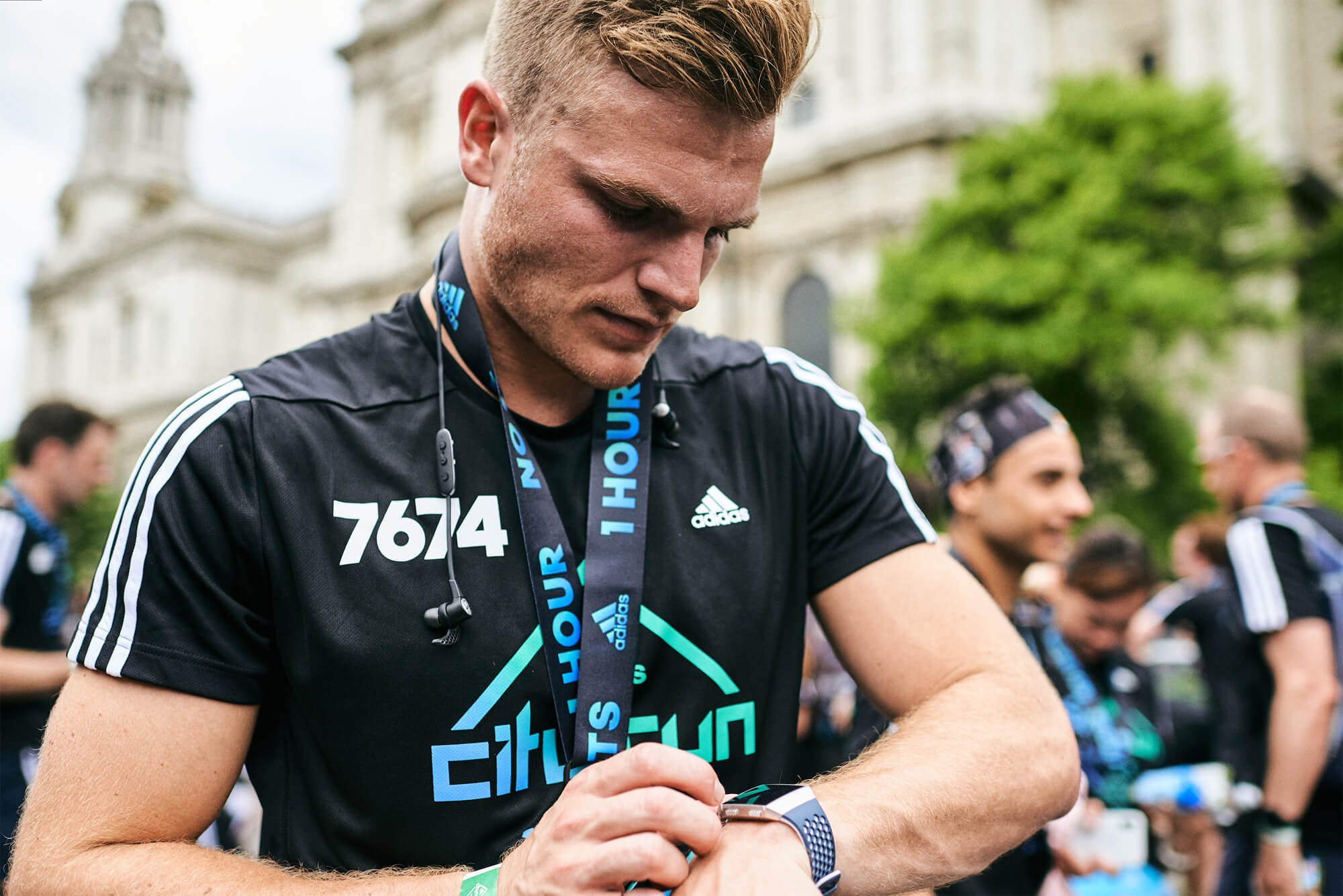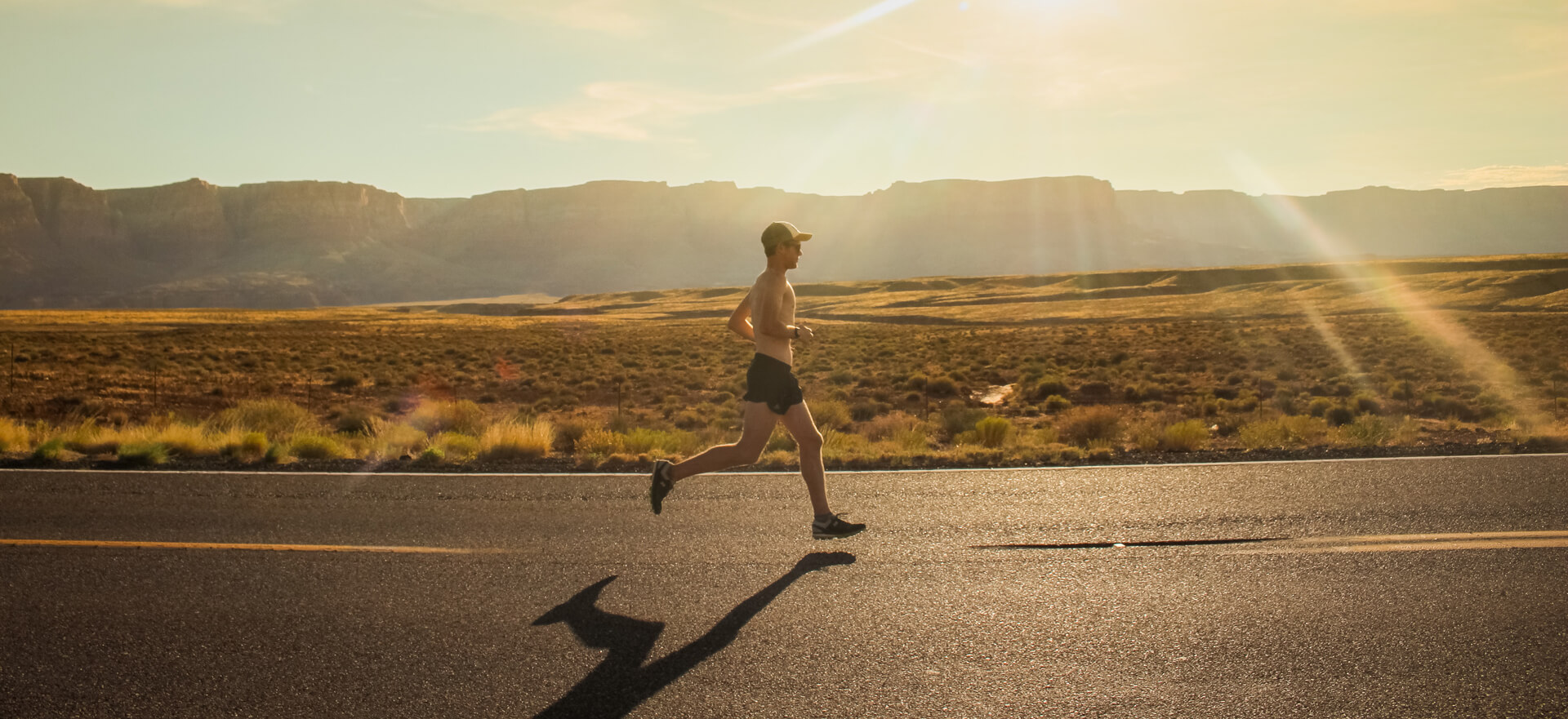
istockphoto.com / JordiDelgado + arismart
The effort to beat running’s most seemingly impossible barrier involves optimising everything from biomechanics and coaching to course design and nutrition. MR presents 26.2 things we can learn from Nike’s attempt to go sub-2.
1. Find a flat course
Constant ups and downs are bad for efficiency – hence the ultra-flat Monza track used by Nike. The IAAF allows a net decrease in elevation of 42 metres over your run – just in case you’re a stickler – but that’s tough to find on the UK circuit. The ASICS Greater Manchester Marathon is the UK’s flattest, with wide, congestion-free roads as a bonus.
2. Minimize your turns
The Monza track, of course, had two gentle curves per lap, but it’s the abrupt corners that do damage: Berlin, where records consistently fall, has a mere 17 turns sharper than 90 ̊, while New York has a brutal 26. London isn’t bad with 19, and Dubai has a mere four including a brace
of hairpins.
3. Keep your cool
On Breaking2 day, the temperatures at Monza were almost exactly what the Nike scientific team were hoping for – starting at 11 ̊C and climbing to 12 ̊ by the finish. That’s warm for most people: according to French research on almost two million runners over a decade, a race-day temp of about 8 ̊ produced the fastest times for mid-packers. You’re unlikely to cope with the heat as well as a Kenyan – head for Brighton, where 8 ̊ is the average temp on marathon day.
4. Stay low
The Autodromo Nazionale Monza is 183 meters above sea level – previous studies have found reductions in VO2 max once above an elevation of 580. There’s speculation that below-sea-level runs could benefit from increased oxygen concentration, but Nike’s scientific team was aiming for a location at less than 300 meters above sea level – London, and many of the UK’s other main races, fit that profile comfortably.
5. Dodge the wind
A tailwind’s always a blessing, but generally speaking air currents are the enemy: hence the choice of Monza’s sheltered track, where speeds rarely eclipse 5mph.
6. Head for the green
There’s some speculation that a tree-lined course can benefit racers by providing a more oxygen-rich racing environment: Monza has some foliage, but leafier tracks lose the benefit because they’re less optimal in other ways. Head for Milton Keynes: 4,500 acres of woodlands, lakesides and parks mean you’ll get your (chloro)fill of greenery.
7. Lose weight
At the elite level, every gram counts – but even for the weekend plodder, 80% of the energy cost of running goes to supporting your bodyweight and propelling yourself forward. Trim the fat by adding hills to your training: a 5% incline burns a whopping 50% more calories than on the flat.
8. VO2 max
Before signing on for Breaking2, Kipchoge had never taken on a V02 max test – but according to French research published in the Journal of Applied Physiology, a maximal oxygen uptake of 86ml/kg/min is the minimum for any athlete aiming to hit sub-2. It’s largely a static quality – and declines every year – but there’s some evidence that you can improve it with short lactate intervals. If you aren’t already running 800s, it’s time to add some to your training plan.
9. Improve your economy
According to an argument-provoking model proposed by Mike Joyner in 1991, optimal running economy – alongside an idealised lactate threshold and V02max – could see the record drop to 1:57:58. Kipchoge’s is probably already as good as it gets – improve yours by spending more downtime barefoot, which Dr Phil Maffetone suggests will improve foot function and energy return.
10. In-vest in quality
Nike’s Aeroblade kit is aimed at disrupting air around its wearer, minimising drag via lightly textured fabric on custom-designed (and unattached) sleeves and added ‘ventilation structures’ – that’s ‘holes’ to you and I – for breathability.
11. Tighten up
In contrast to the usual short-shorts uniform, the Breaking2 team all wore ‘short tights’ – tailored to fit, with areas of high/low compression built into specific zones across the leg muscles and hips. A 2009 study saw moderately trained runners improve their performance on an all-out treadmill test in compression gear, possibly by improving mechanical efficiency – it’s worth a try.
12. Sock it to yourself
Time to toss the old grey-n-faithfuls: the NikeGRIP running sock maximises grip along the heel and bottom of the forefoot, while maximising ventilation and arch support. If that’s a bit too much, just avoid cotton fibres – they’ll trap moisture, causing blisters – and go for seamless construction.
13. Keep it steady
Fierce competition can be bad for PBs. With any changes of pace, lactic acid buildup gets worse. Aim to race at a steady pace: no putting on a quick burst to pass that guy in the alligator suit.
14. Embrace the draft
Co-operative drafting is likely to be key to any sub-two run: Kipchoge, of course, benefited from paid pacers, but if that’s not an option, running in a tight arrowhead formation seems to offer the best benefits for all concerned. Something to float on your WhatsApp group, maybe.
15. Get Paced
It’s worth sticking behind the guy with the balloons – research from the University of Limerick found that when researchers (rather than experienced runners) controlled the pace of a treadmill, the athletes were able to go faster. If someone else is doing the pacing, you can allot your mental energy elsewhere.
16. Worry about form, not effort
There’s science behind the idea of aiming at a target and sticking to it – the same Limerick study suggests that, by focusing on running form rather than monitoring your own body for signs of excess effort, you can run faster while maintaining the same level of effort.
17. Eat more spinach
Andrew Jones, professor of applied physiology at the University of Exeter, notes that the Breaking2 athletes already had diets high in nitrate-rich stewed spinach before the attempt, but advised them to up their nitrate intake further with beetroot for improved blood flow, muscle contraction and neurotransmission.
18. Drink Smart
Reports that Kipchoge refuelled via an experimental sports drink with a (high) carb concentration of 14% can’t be confirmed, but there *is* speculation that enhancing absorption of carbs can fuel faster efforts. Maurten are the field leaders: their Drink Mix 320 has 80g of carbs per serving.
19. Go for a caffeine kick
According to Jones, all three athletes took on a hit of caffeine for the final half hour of the race, counting on it to kick in for the final spurt. Recent research suggests that you won’t hamper your caffeine sensitivity by taking it during training: experiment with gel shots on your longer Sunday runs.
20. Get lighter shoes
Reducing the mass of your shoe by 100 grams is enough to shave about one percent from race time, according to a recent study published in Medicine & Science in Sports & Exercise. Going lighter improves running economy – but so does cushioning, so going completely shoeless won’t offer further benefits…unless you can find yourself a track made entirely of EVA foam.
21. Put a spring in your step
The whole Breaking2 project, of course, was a showcase for the Nike VaporFly Elite, which supposedly reduces the energy required to run by 4% by using a curved carbon-fiber plate embedded in the sole.
Kotler suggests that this results in a phenomenon called ‘group flow’, where everyone’s performance is elevated. Find a running club at runtogether.co.uk
in training runs, and utilise that positive experience on race day.
22. Get encouragement
This might be one spot where you’ve got the edge on elites running on a closed course. In a 2002 study from the University of Pennysylvania, runners doing a treadmill test pushed harder the more regularly they were given encouragement. Pick a race with big crowds, or assemble your own cheering section.
23. Find faster friends
In a 2009 study from Oxford University, endurance athletes were less sensitive to pain when training as a group: something the researchers put down to greater endorphin release in the brain. Rise of Superman author and researcher Steven Kotler suggests that this results in a phenomenon called ‘group flow’, where everyone’s performance is elevated. Find a running club at runtogether.co.uk.
24. Head for friendly territory
There’s a benefit to having social supporters – in a 2014 study led by Samuele Marcora, researchers found that ‘social’ encouragement doesn’t just motivate athletes to try harder, but reduces relative perception of effort. Seeing happy faces flash up on a screen during an all-out time trial helped subjects last 12 percent longer. Being in a better mood helps.
25. Fuel with smaller successes
Obviously, it helps that Kipchoge’s one of the world’s fastest men, but his 2015-6 marathon gold streak probably helped him psychologically: studies have shown that experiencing success in a task once enhances performance in follow-ups by increasing perceived competence. Set yourself up for success.
26. Change your beliefs about what’s possible
It’s generally accepted that your hard physical limits depend on your beliefs about what’s possible – when cyclists in studies chased a ‘ghost’ rider going slightly faster than their previous PB, for instance, they upped their effort accordingly. Will the regular marathon circuit see more 2:01 performances now that the barrier’s fallen? Tough to say – but for the regular runner, just expecting more from oneself might be the breakthrough you’re looking for.






